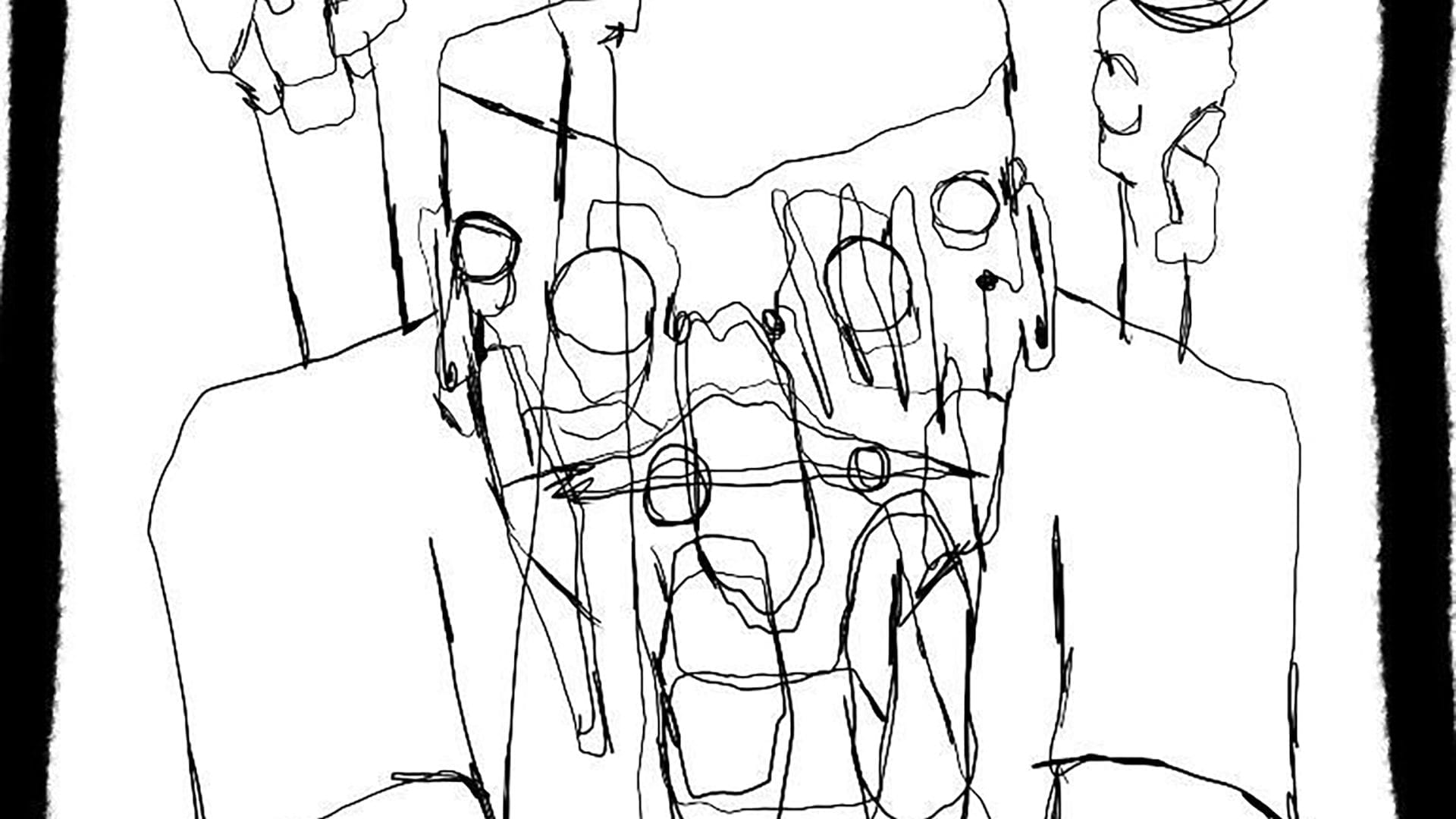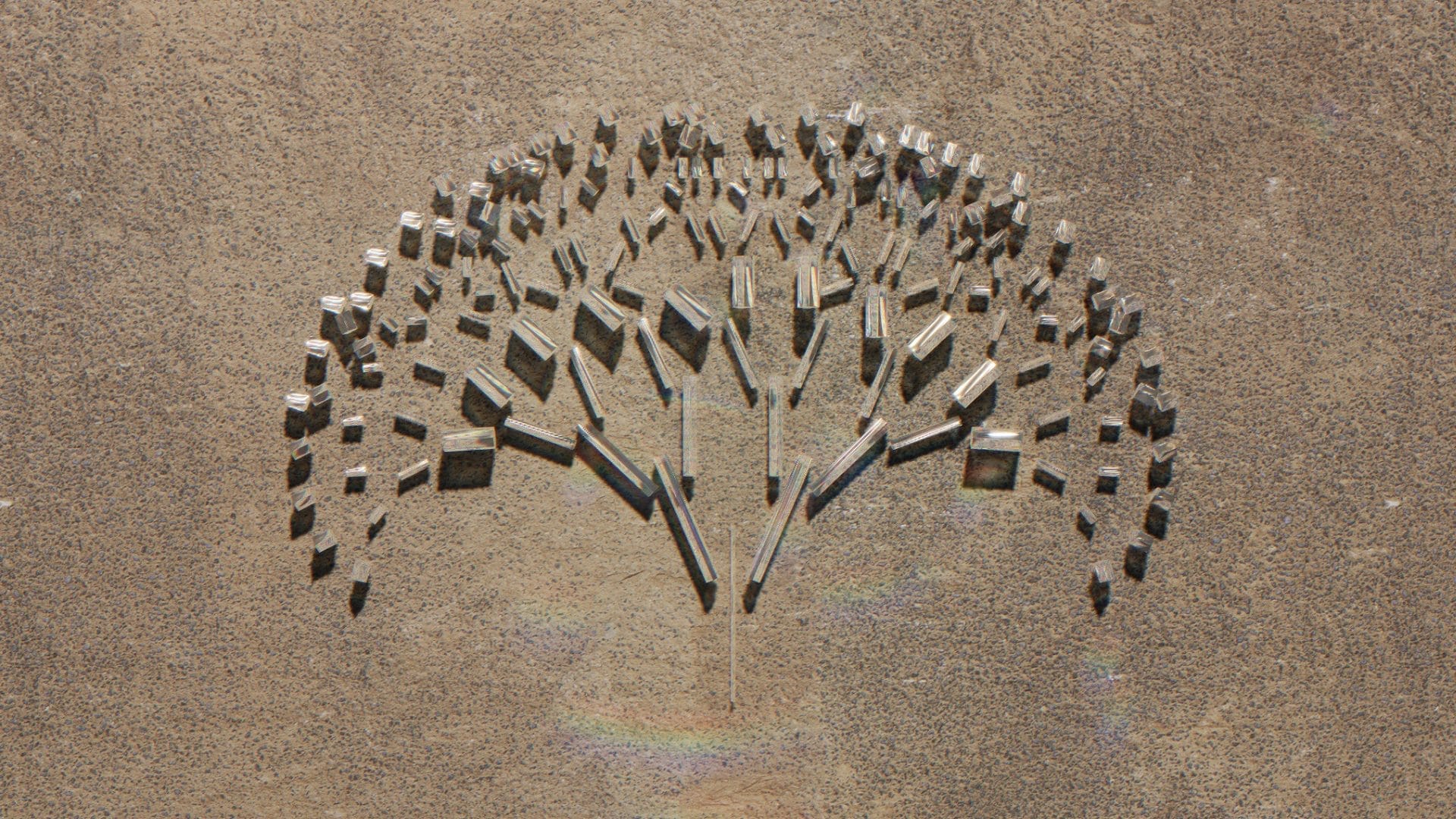
The Prismatic Generation: John Gerrard’s Crystalline Work on Feral File
In June 2024, John Gerrard presented “Crystalline Work”, a yearlong simulation-based work of art on Feral File which began on the summer solstice 2024 and will end summer solstice 2025. Across multiple works Gerrard has explored how digital simulation can be used to question critical global issues, urging us to reconsider how technology can be a potent cultural tool to consider our interaction with the natural world.

The Journey of Simulation in Gerrard’s Art
John Gerrard’s engagement with simulation art began in 1994 during his academic years at The Ruskin School at Oxford University, where he was first introduced to the transformative possibilities of data and network computing. This foundational experience shaped his path, leading him to pursue an MFA in Art and Technology at the Art Institute of Chicago and later an MSc in New Media at Trinity College Dublin — instrumental in developing his distinctive artistic approach, allowing him to integrate advanced technologies like 3D scanning and game engines into his work.
Since the beginning of his artistic journey, Gerrard’s singular aesthetic has been showcased on international stages, with exhibitions at venues such as the Los Angeles County Museum of Art and the Hirshhorn Museum and Sculpture Garden in Washington, D.C to mention a few. His body of work, utilizing real-time computer graphics, challenge traditional artistic boundaries and engage viewers in complex discussions on themes such as energy, consumption, and environmental impact, prompting a deeper reflection on urgent global issues.
Unveiling “Crystalline Work (Arctic) 1”
“Crystalline Work (Arctic) 1”, the first chapter of the series features a prismatic virtual robot situated at the Arctic North Pole, executing an ice-generation algorithm that crafts intricate crystal bar lattices. These lattices form archetypes—masks, solar crosses, mandalas, stars, trees, and mycelium—each a product of the algorithm’s intricate logic.
Embedded in each work is a high-resolution image file of the generated archetype, exportable and printable to the artist’s specifications. Additionally, a 3D model of the crystal array can be utilized for 3D printing or virtual world-building, underscoring the multifaceted nature of these representations.
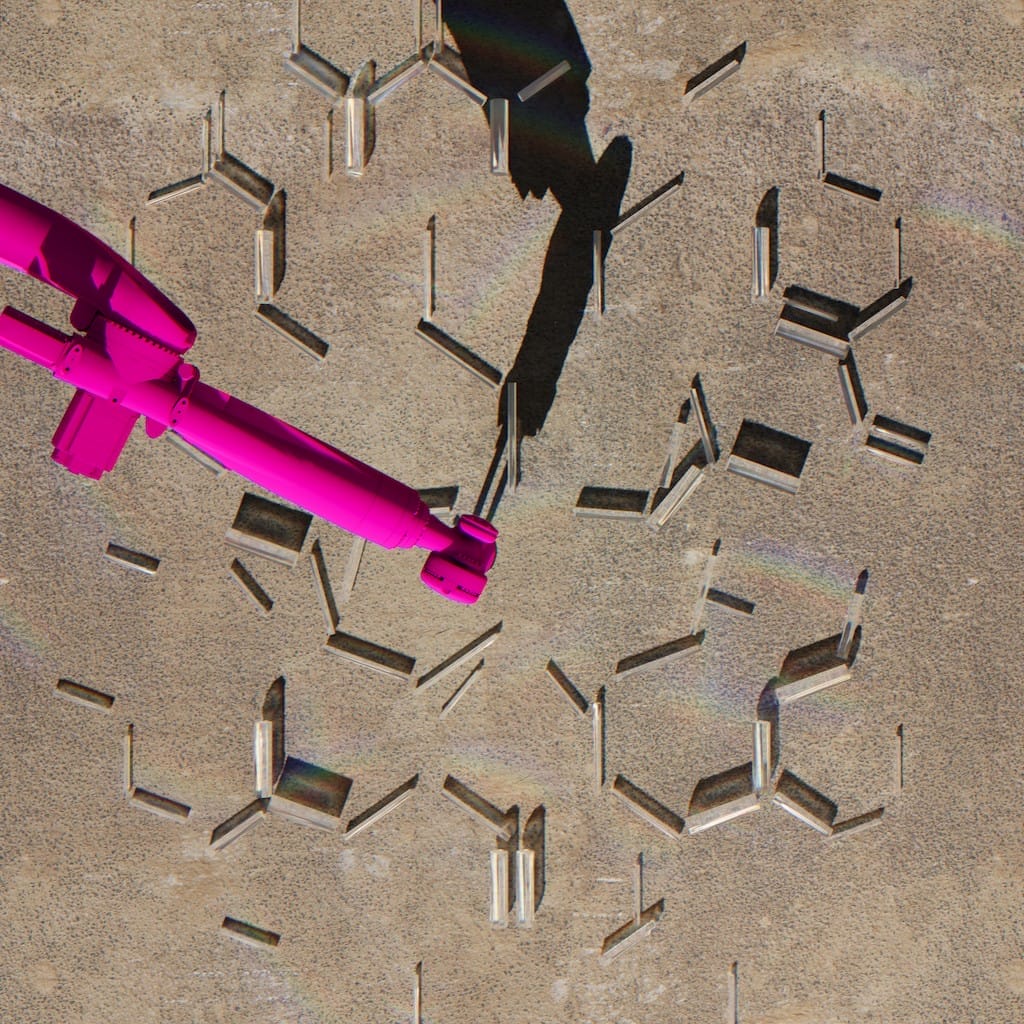
The Philosophical Core
At the philosophical core of John Gerrard’s art lies a profound inquiry into the interplay between technological progress and environmental awareness. His “Crystalline Work (Arctic) 1” serves as a contemplation of the Arctic’s fragile beauty and the discernible impact of human activities. The piece’s title itself suggests a juxtaposition—the ephemeral nature of ice against the persistent essence of the Arctic landscape.
This project also integrates modern digital practices, with 24 archetypes produced daily and tokenized , thus engaging with the digital economy and blockchain technology. Gerrard’s dedication to environmental conservation is clear: he commits 25% of sales revenue from these NFTs to the restoration of the Wild Atlantic Rainforest in Connemara, Ireland working with https://www.hometree.ie/
The Genesis of the Project
The genesis of “Crystalline Work” can be traced back to 2005 when John Gerrard began experimenting with a JavaScript online snowflake generator. This initial foray into digital art evolved into the creation of intricate patterns that resembled lace suns, which further developed into notable works such as the “Fractal Floor” (2006) installation and the “Smoke Tree” (2006) wall piece. These early experiments were foundational in setting the stage for the complex themes and techniques in Gerrard’s later work.
By 2018, Gerrard’s exploratory work had solidified into a self-contained executable program, significantly advancing his artistic methodology. The integration of WebGL and blockchain technology in early 2023 marked a pivotal evolution in his career, enabling the creation of sophisticated simulations accessible online.

The Eternal Dance of the Robotic & Sonic Experience
As briefly introduced,”Crystalline Work (Arctic) 1″ depicts an isolated platform at the Arctic North Pole: in this virtual environment, a robot uses an ice-generation algorithm to meticulously craft real-time crystal patterns, referred to as “archetypes.” These archetypes, produced at a rate of 24 per solar day, 168 per week, and 8,760 annually, encompass a range of symbolic forms including masks, solar crosses, mandalas, stars, trees, snowflakes, and mycelium.
The robotic arm, a central feature of the piece, is in constant motion, symbolizing the ongoing interaction between technology and nature. Its color shifts moment by moment, sweeping through the entire visible light spectrum from solstice to solstice, reflecting the natural rhythms and changing conditions of the Arctic environment. This color transformation reaches its peak during the solstices when it shifts to mirrored chrome, highlighting the extremes of light and darkness in the Arctic.
Accompanying the visual spectacle is a generative sound synthesis model produced in collaboration with Jonas Hammerer, which uses vibrations to emulate sounds, creating a “material choir.” This auditory layer mimics the complex dynamics of nature, harmoniously integrating with the visual elements to enhance the multisensory experience. The sound extends beyond human auditory limits, reaching frequencies perceptible only to animals such as wolves during the “unhuman times” of the summer solstice, and dips below human hearing by the winter solstice, evolving throughout the year.
Each archetype’s creation varies in duration, requiring between 20 minutes to over an hour to complete. Once finished, the robot’s ‘work’ is digitally captured and dropped into the Feral File gallery as a unique, dynamic, tokenized 3D Web Graphic Library (WebGL) art piece, documenting that specific solar moment and made available for collection. This integration of visual and auditory elements invites viewers to engage with “Crystalline Work (Arctic)” on multiple levels, offering a deep, immersive interaction that encapsulates the delicate balance between human innovation and the rhythms of the natural world.
The Prismatic Generation
John Gerrard’s “Crystalline Work (Arctic) 1” introduces the concept of the “prismatic” generation—a cohort born into a world where digital networks create a deeply interconnected reality. This generation views the world through a lens that transcends traditional boundaries and binary thinking, seamlessly navigating both virtual and physical realms in a landscape defined by data.
Gerrard envisions “Crystalline Work (Arctic) 1” as more than an art installation; it is a symbolic clock or calendar calling for a new era — an era moving beyond the constraints of petroleum dependence, toxic material cultures, and divisive borders, proposing a reimagined future. As such, the project is timed with precision, as the summer solstice of 2024 marks the commencement of this new epoch, designated as year 1 in Gerrard’s solar calendar.
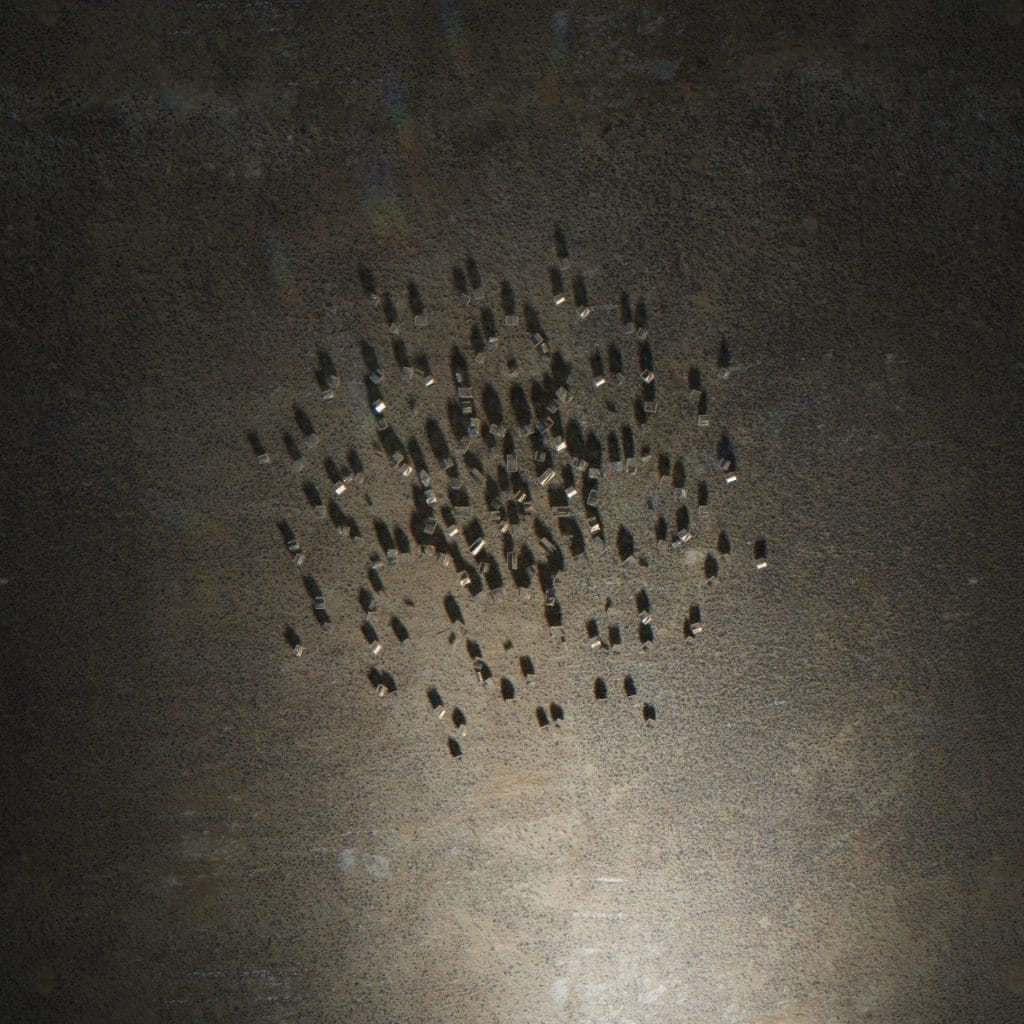
John Gerrard In Conversation with Fakewhale
Fakewhale: In your recent project ‘Crystalline Work,’ with Feral File you’ve incorporated generative artworks on the Ethereum blockchain, produced every hour for a year. Could you elaborate on how this project connects with public perceptions of climate change and what you aim to communicate through this intersection of art and blockchain technology?
John: I was very interested in ideas of work, duration and of transformation. There is a robot in the piece which performs for a year, producing sculptures which are based upon ice generation algorithms. These are saved as worlds and a new one begun. Fundamentally and foremost this a universe onto itself and if you go to see the work : https://feralfile.com/exhibitions/crystalline-work-5ze and spend time with it performing I think this becomes clear. A second relates to light – the robot is what I call chromatic – in that its surface shifts in color across the spectrum across the year. it is unstable as such.
Another is to support through sales of the work an entity called hometree.ie who are renovating a temperate rainforest in Ireland. So a play on virtual labour and its potential effects in the real world.

Fakewhale: Reflecting on your artistic journey from your early works to ‘Crystalline Work (Arctic)’, how has your approach to gathering inspiration, conceptualizing projects, and executing your work changed over the years?
John: I would say not that much. I had quite a formal art school education – BFA at the Ruskin School in the UK, MFA at the Art Institute of Chicago and some of the lessons learned there – especially in the Ruskin of criticality are still central to my process. One picks up a thought, idea, image or text and sits with it, sometimes turning it in space and considering it. If is still sitting with it after a considerable amount of time, sometimes many years, it is possible it may become a work. Actually sometimes I have to make something so it stops bothering me. In a sense Crystalline Work is one of those pieces – it began very early with a javacript snowflake generator around 2005 and just stuck around until I finally got it made (see note at end). i think a very consistent path across those years has been one of the medium – that of the virtual world – ideas to do with the sculptural photograph. These have been very consistent and unifying since at least the year 2000.
Fakewhale: Reflecting on your past works, your ‘Western Flag’ installation uses a smoke flag to symbolize the devastating impact of the oil industry. Could you discuss the development of this idea and how you chose the smoke flag as a symbol?
John: I think Western Flag is about more than the devastating impact of the oil industry – as there have been such vast array of impacts – some can be thought of as certainly negative – others fundamental to our very being at this time. In this clip you can get some background : https://www.youtube.com/watch?v=kvSQNr0IIgo and in this article deeper information : https://www.frieze.com/article/one-take-john-gerrards-western-flag-spindletop-texas but fundemental to say, the food one may eat, the roads one may move upon, the order of the world, the dominance of the US – all these are qualities of petroleum and all these aspects I think Western Flag touches upon. There is also a critique of what is called the carbon legacy embedded – which is the accumulation of CO2 in the atmosphere since 1902 (the date of the Lucas Gusher strike that Western Flag relates to) but that is not the only subject.
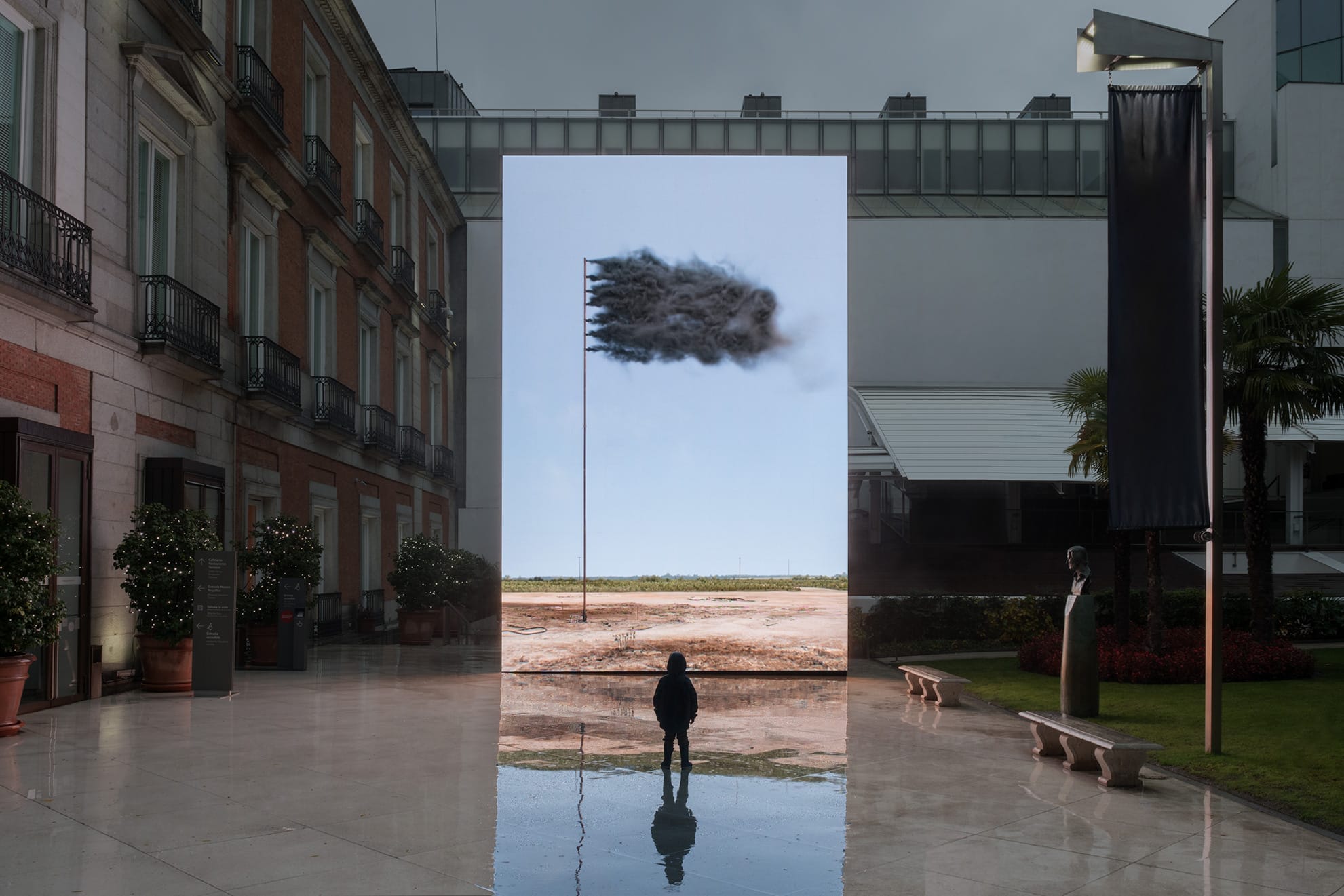
Fakewhale: With ‘Surrender (Flag) 2023’ suggesting a future less reliant on fossil fuels, what are the potential cultural shifts you anticipate in response to global environmental challenges?
John: I would say that Surrender (Flag) 2023 is presented as a hopeful flag presented in a sustainable material of steam or water vapour. It is less a suggestion and more of a dream or hope. In terms of cultural shifts it is hard to summarise ones thoughts in a shorter form but I think the word Surrender is important. What does it mean to any one person? Does it mean to fail? To stop? To negotiate? What comfort might one give up to create a more equitable world? I think often the answer is nothing for many people and as climate change increasinly becomes a mortal and ethical question – these issues will move to centre stage. I read recently from Oxfam that the richest 1% produced around 16% of CO2 emissions in 2019 ….. What struck me was the next line that these CO2 emissions are enough to cause 1.3 million excess deaths globally due to heat. How does a global elite psychologically and ethically process this information going forward? Might that happen?
Fakewhale: How do you balance the technical complexities with the aesthetic and thematic goals of your projects? Additionally, how do you foresee technology shaping the future of environmentalart?
John: I would say that I work with a team or teams – producer Werner Poetzelberger. Programmer Helmut Bressler. Animators, modellers, etc – this allows the expansion of ambition in the work.
It is hugely time consuming to make ambitious digital art – in particular in the game engine (or in webgl as per Crystalline) so teams are important. In terms of aesthetics I think following two decades of work I have always hoved close to my artistic great guides – be it Felix Gonzalez Torres or Roni Horn, whose work I experienced in my early twenties and which profoundly changed me. In a sense it does not matter if you are working in jigsaw puzzles or conceptual photography – one must have a clear vision and feeling and then pursue it against all odds. No one will make the work but you – and if you do not get it right – it fails. In terms of the future – really outside of dance or song all art is technology in some shape or form. So artists will continue to address the network, address the landscape, address the atmosphere with the best tools they can find for their work. That is the essence of art and work and it will not change.
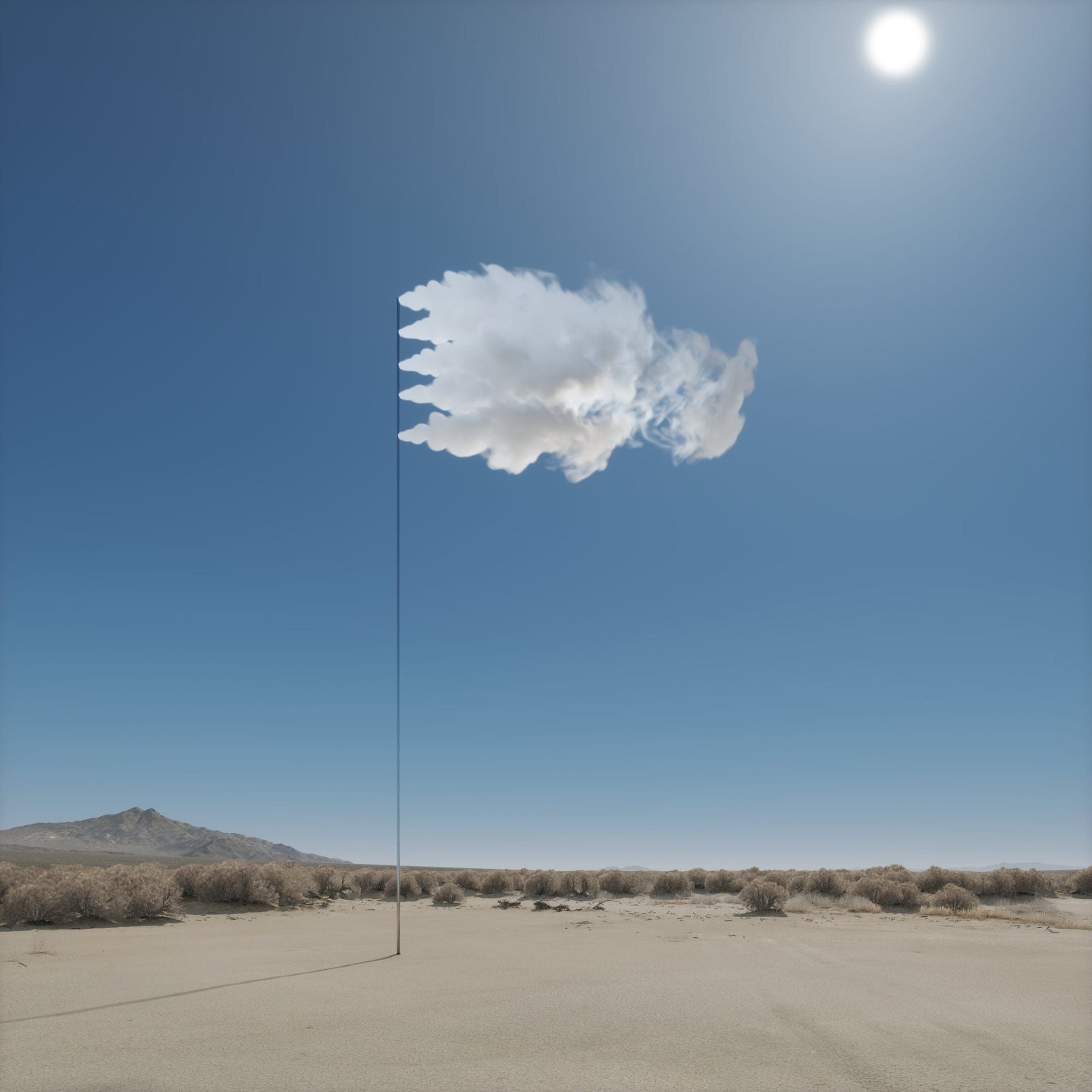
fakewhale
Founded in 2021, Fakewhale advocates the digital art market's evolution. Viewing NFT technology as a container for art, and leveraging the expansive scope of digital culture, Fakewhale strives to shape a new ecosystem in which art and technology become the starting point, rather than the final destination.
You may also like
In Dialogue with Ewa and Jacek Doroszenko
In this interview with Ewa and Jacek Doroszenko, we delve into the complex intertwining of their exp
19 – The Kill Switch
Washington D.C., Outside of the Tilted Kilt Pub & Eatery, United States Kibby stared at the foot
Ghosts, Holograms, and AI: Emi Kusano’s EGO in the Shell
What separates being from system is becoming almost imperceptible. Inspired by the visionary Ghost i


